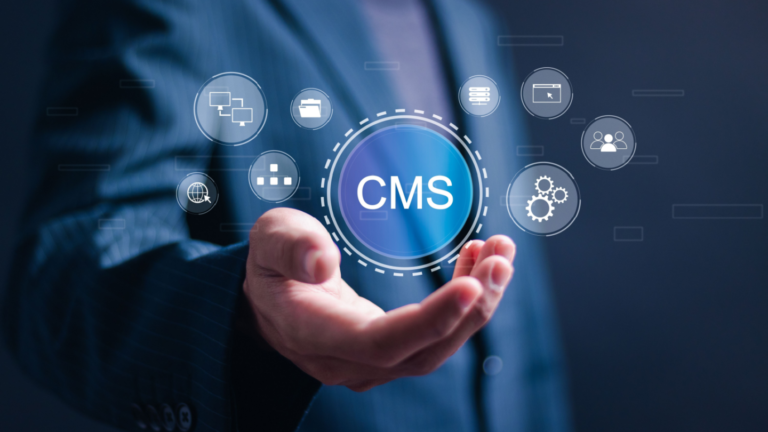International expansion is necessary as the world is a digital marketplace and companies are expected to reach various audiences in different countries, regions, languages, and cultures. Using the same content in a uniform international market distribution rarely champions interest in local audiences; if anything, it can work against the brand in some circumstances, creating misinterpretations or disinterest. To remain competitive, brands need a content strategy that does more than translation but localization and regionally tailored adjustments. Enter the headless CMS. A headless CMS offers the flexibility, scalability, and control needed to guarantee the proper content is delivered to the proper users across various markets while maintaining brand integrity and operational efficiency.
Enabling Multilingual Content Through Structured Content Fields
One of the biggest localization challenges international content teams experience is the capacity to work in various languages without sacrificing consistency, quality, and output. Typically, CMS solutions mitigate this by duplicating entire pages, adding language-based tabs, or generating entirely new sections per language essentially replicating the content architecture and needing its own instance for every single translation. This works for a handful of languages; however, it’s not effective in companies that work across regions and language dialects. In the end, it’s an overly complicated approach riddled with too much duplicate content, siloed efforts, and an avalanche of manual maintenance.
Additionally, this causes versioning to go out of sync and makes it difficult for the language teams to collaborate, as the risk for old messaging, inconsistent branding, or erased translations exists. So, when a CTA, product description, or legal notification changes, it must be tracked and replicated in every language manually often without approval tracking or automated workflow ease. This is not only a waste of time, but localization fails since the enterprise could be slowed down in launching a campaign that must go up quickly or unable to adjust to critical marketplace requirements. Simplify content management with headless CMS to centralize content updates and streamline localization workflows across all languages and channels.
A headless CMS is an even more effective and scalable solution because instead of separating content iterations across different languages, a headless CMS builds out language-agnostic components to be rendered in whatever language is preferred. For example, instead of a content model that creates three separate versions English, Spanish, and German a headless CMS creates one content model with the three iterations existing within the structured fields. Editors have their language fields for the same content object English, Spanish, German, French, Mandarin; they can view all localized content in one place. Therefore, oversight is improved, no URL or page duplication exists, and when publishing or updating content, the chances of human error are drastically reduced.
Furthermore, because a headless CMS pulls localized content via APIs as needed, sites and applications can detect and present the proper version without editors or end-users having to switch back and forth in the settings. Whether a landing page in Germany, a mobile app in Mexico, or an email opened in Canada, users will receive not only translated content but also content appropriate for the locale or browser language via geolocation or individual account settings.
In addition, this increasingly API-driven, connected environment supports greater localization workflow automation. Companies can integrate their TMS, machine translators, and linguistic service providers directly into the CMS to automatically trigger translation requests, receive updates, and approve edits meaning multilingual employees worldwide experience faster turnaround times, better communication, and easier access to translation progress at any point in the process.
Moreover, a unified multilingual content management infrastructure within a headless CMS facilitates more complicated efforts for personalization. Teams can tailor localized content to account for regional sales, culturally sensitive references, changes in currency, or even geographic seasons enabling companies to use the same content framework with just different localized necessities. These types of options allow companies to offer fully localized experiences that go beyond translation for higher engagement and loyalty from international audiences.
Ultimately, a headless CMS for multilingual management eliminates a lot of the inefficient management that comes from non-headless setups. Companies have a clean repository of translation assets and no worries about redundant efforts or competing branding and messaging. A headless CMS handles distribution to the proper users in the proper locations. Therefore, when companies inevitably expand into global markets, this solution is not just beneficial but vital for proper functioning and agile, correct fulfillment.
Adapting Content Culturally for Local Relevance
Localization is more than just translation. It means understanding cultural nuances, how people communicate and their communicative patterns, and various geographical expectations. What works in one place might be considered offensive or misinterpreted in another. Thus, to resonate with and capture the attention of a global audience, content must be adjusted to meet the requirements of each region’s cultural atmosphere.
A headless CMS makes this possible and efficient through content modularity. Teams can manage and adjust localized components, region-based titles, images, sales, or even calls to action without rebuilding an entire page layout. They gain entry to specific segments of the content for quick, easy contextual cultural modifications of campaigns that guarantee their message is appropriate and appreciated by every audience segment.
Streamlining Translation Workflows and Collaboration
Translation across multiple teams, agencies, or third-party vendors can become complicated and time-consuming quickly. Without a central overseer, teams can easily fall out of touch with versioning, deadlines, or even project goals. A headless CMS, however, integrates with translation management systems (TMS) and comes with workflow automation capabilities that streamline the localization process from beginning to end.
Translation tasks are assigned, status updates are available, and real-time pushes note progress and changes. Notifications, sign-off queues, and version control histories show what’s completed and still pending to ensure nothing is forgotten. A centralized location makes collaboration easier for linguists, editors, and those on the ground in regional offices.
Delivering Region-Specific Experiences via API-First Architecture
Users expect their digital experience to match their location currency adjustments, seasonal promotions, legal disclaimers, or imagery related to their culture. With an API-first build process, a headless CMS allows brands to automatically connect with region-specific content in real time across any front-end solution website, app, digital display, or IoT device.
Rather than needing to build several different websites to appeal to different marketplaces, brands can create one single source of content management system and apply the API logic to serve the appropriate regional edition. This efficiency saves on development time as well as hardware and software expenses while bolstering the benefit of brand consistency and fast implementation for updates on a global scale. Users in London, Tokyo, and São Paulo all receive the same version, but it’s adjusted to feel as if it’s theirs.
Managing Global Content Governance and Brand Consistency
However, where localization allows such freedoms, brands also need to ensure brand compliance and consistency in every region. For example, off-brand graphics or messaging not only jeopardize a company’s integrity but also create a fractured experience. A headless CMS supports this need for international transparency and equity by establishing a centralized dedicated access point for brand compliance, such as templates and guides.
With user permissions and managerial oversight, a corporate team can hide proprietary documents from your average marketer who shouldn’t have the ability to change brand standards. Instead, the global team maintains authority over marketing essentials while the regional team can access what’s needed to create localized marketing for their target audience. It’s a win-win approach that not only secures the brand but also encourages creativity and regional buy-in.
Supporting Localization at Scale for Enterprise Operations
When you’re an enterprise-level customer with thousands of projects deployed in dozens of countries, localization is a huge challenge from product descriptions and legal disclaimers to marketing and UI strings. The sheer volume of content can be overwhelming, but a headless CMS is created for this type of enterprise-grade effort, especially with content modeling, significant taxonomies, and multi-tiered filtering that make even the largest libraries manageable.
For instance, editors can take advantage of structured content fields to categorize a string by country or region, language, line of business, or even department. The more fields available, the more apt an editor can find what they need to quickly edit and publish localized, relevant content. In addition, with the ability to schedule events and leverage bulk edit features, real-time API delivery empowers thousands of team members to manage many iterations without sacrificing speed, efficiency, and oversight.
Enhancing SEO with Regionally Optimized Content
Not only do users favor localized versions, but search engines do, too. When a site has regionally optimized content that resonates with a specific language, area, and cultural intent, Google and the like will more often rank the version of the content higher. A headless CMS system will support international SEO by allowing businesses the chance to tailor content with regional metadata, schema markup, and hreflang tags.
If a headless CMS implementation is set up correctly, a business can offer search engines the version of their pages that belong to them naturally the internationally separate versions. In addition, content can change based on regional trends or specific keyword research so that content teams can pivot quickly within localized search intent. This all leads to better rankings, higher CTRs, and more traffic across any international market.
Conclusion
Where once a universal approach to the same content would suffice in an increasingly globalized world, brands must now rely on localization and regionalization to connect with diverse audiences across countries, cultures, and languages. The solution to such complexity is a headless content management system (CMS). The headless CMS plays into the omnichannel requirement by providing one source of centralized control for content regardless of display and the power to plug into localization and translation systems.
Furthermore, it enables decoupling of content and display, empowers multilingual content workflows, and allows for regionally specific experiences. Therefore, the headless CMS is a solution for any company looking to expand internationally without compromising quality, consistency, and efficiency. To expand internationally and effectively, companies need the support of a headless CMS to provide personalized, culturally relevant content at scale.

